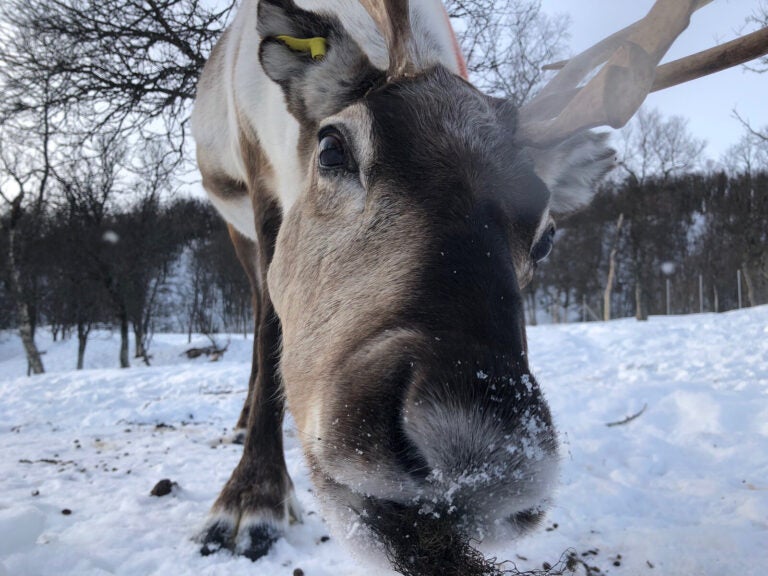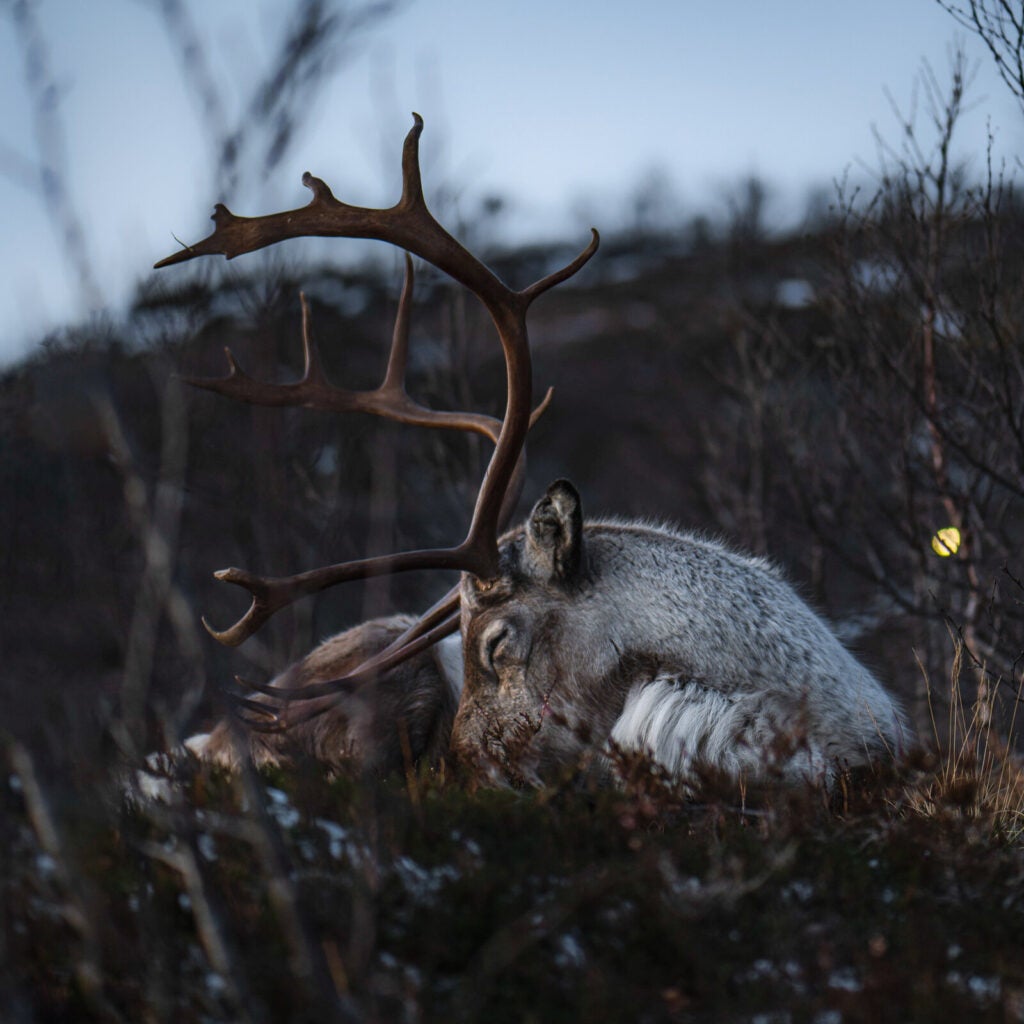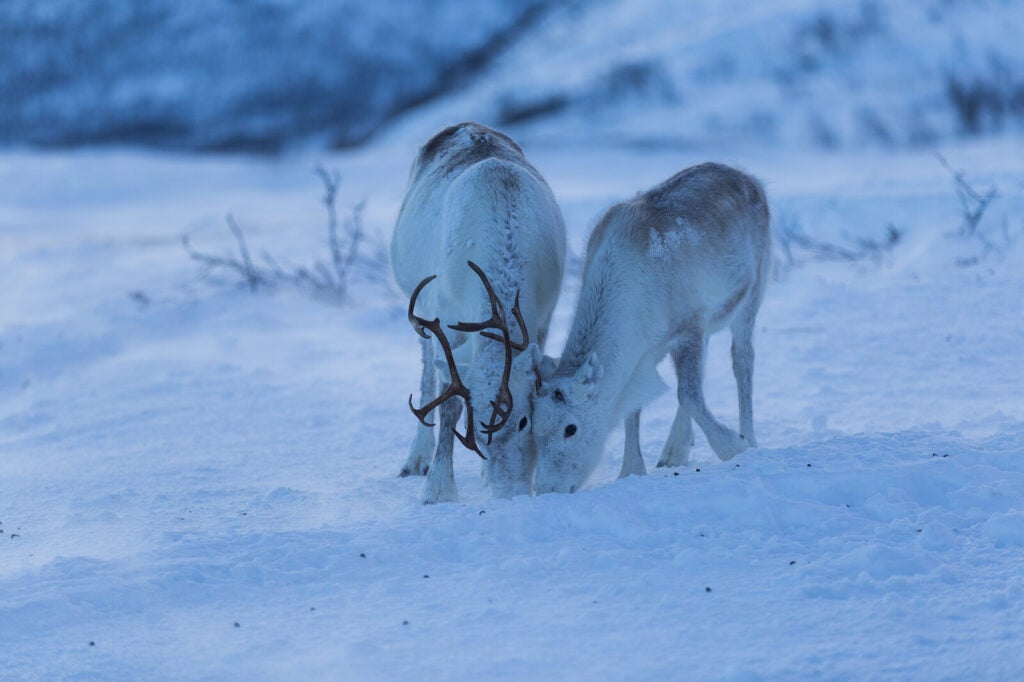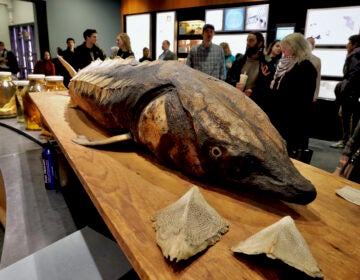How the real-life Rudolphs get enough rest: Sleep while you chew!

Scientist measured the brainwaves of cud-chewing reindeer, and found that they are similar to those of deep sleep. (Leo Rescia)
It’s almost Christmas Eve, the night when Santa and Rudolph pull the king of all-nighters to deliver their gifts. But what about the rest of the year? How do real reindeer manage to get enough sleep?
In new research published in the journal Current Biology, a group of scientists say the secret might lie in multitasking.
One challenge for reindeer is that their habitat is different from most places on the planet: “In winter and in summer, in the Arctic, we either have constant darkness or constant light,” says Gabi Wagner, a neuroscientist at the Norwegian Institute of Bioeconomy Research and an author of the study.

“In summer,” says co-author Sara Meier, a chronobiologist at the University of Zurich, “they have an open buffet and can choose what they like best,” including lichens, herbs, mushrooms, and plants. That’s when they really fatten up. In winter, however, “they have to dig through the snow and maybe find some lichen or some grass.”
The result, says Wagner, is that “they’re very, very active during the very short growing season in summer. And they’re very lazy in winter when there isn’t any food.”
But during that summer feeding bonanza, when reindeer have so much eating to do and so little time to do it, when is it that they sleep? And do they sleep less than in the winter?
To answer those questions, Wagner and her colleagues decided to do something no one had ever done before — study sleeping reindeer brains. They turned to several females that live in a fenced outdoor enclosure in Tromsø in northern Norway.
“Our data was recorded non-invasively,” says Melanie Furrer, a neuroscientist at the University of Zurich, “meaning that the electrodes were placed on their skin and not implanted in their brain.”
She measured the reindeer’s brain waves continuously for several days straight in the summer, again in the fall, and once again in the winter. “What we found,” says Furrer, “was, first of all, they sleep a similar amount of time across the whole year.”
This suggests that even though reindeer spend all that time eating and moving around during the summer, they’ve found a way to still get as much sleep as they do at other times of the year. Furrer thought maybe something was happening during rumination, the process of chewing their cud.
“While they chew,” Furrer says, “they are in a body position that is very similar to the one of deep sleep. So they usually have their eyes closed and they are quite still.”

Furrer looked at the brain waves of the reindeer as they ruminated, and sure enough, they resembled those of deep, non-REM sleep. In fact, the more the reindeer ruminated, the less deep sleep they required.
The conclusion is that rumination in reindeer serves two purposes — digestion and sleep. They’re multitasking.
“Not only does [rumination] help them to get the most energy out of the food they have,” says Wagner, “but it also makes sure that their brain gets enough rest and they get the sleep they need. They’re like us — they can’t sleep one hour today and then catch up next week.” Rather, reindeer need a certain amount of sleep every day.
Menno Gerkema, a retired chronobiologist from the University of Groningen in the Netherlands who wasn’t involved in the research, finds the study fascinating. “I’m rather enthusiastic about all the suggestions that are hidden in this paper,” he says. “Suggestions for further research, for looking at other animals.”
As scientists look to what’s next, these new findings also echo the traditional wisdom of the Sámi, Indigenous people of Norway who have herded reindeer for centuries.
“Sámi reindeer herders have known all along that the animals need peace to eat and lie down to ruminate,” says Wagner who works with the community. For the first time, “we now have the physiological data that that is a requirement for the reindeer, which they need not only to get enough energy out of the environment, but also for their brain to get the rest it needs.”
She says it’s an important part of their biology that should be considered when setting aside rangeland for the animals to give reindeer the space to chew their cud and sleep deeply … including on those long summer days when Christmas is but a dream.
9(MDAzMzI1ODY3MDEyMzkzOTE3NjIxNDg3MQ001))




